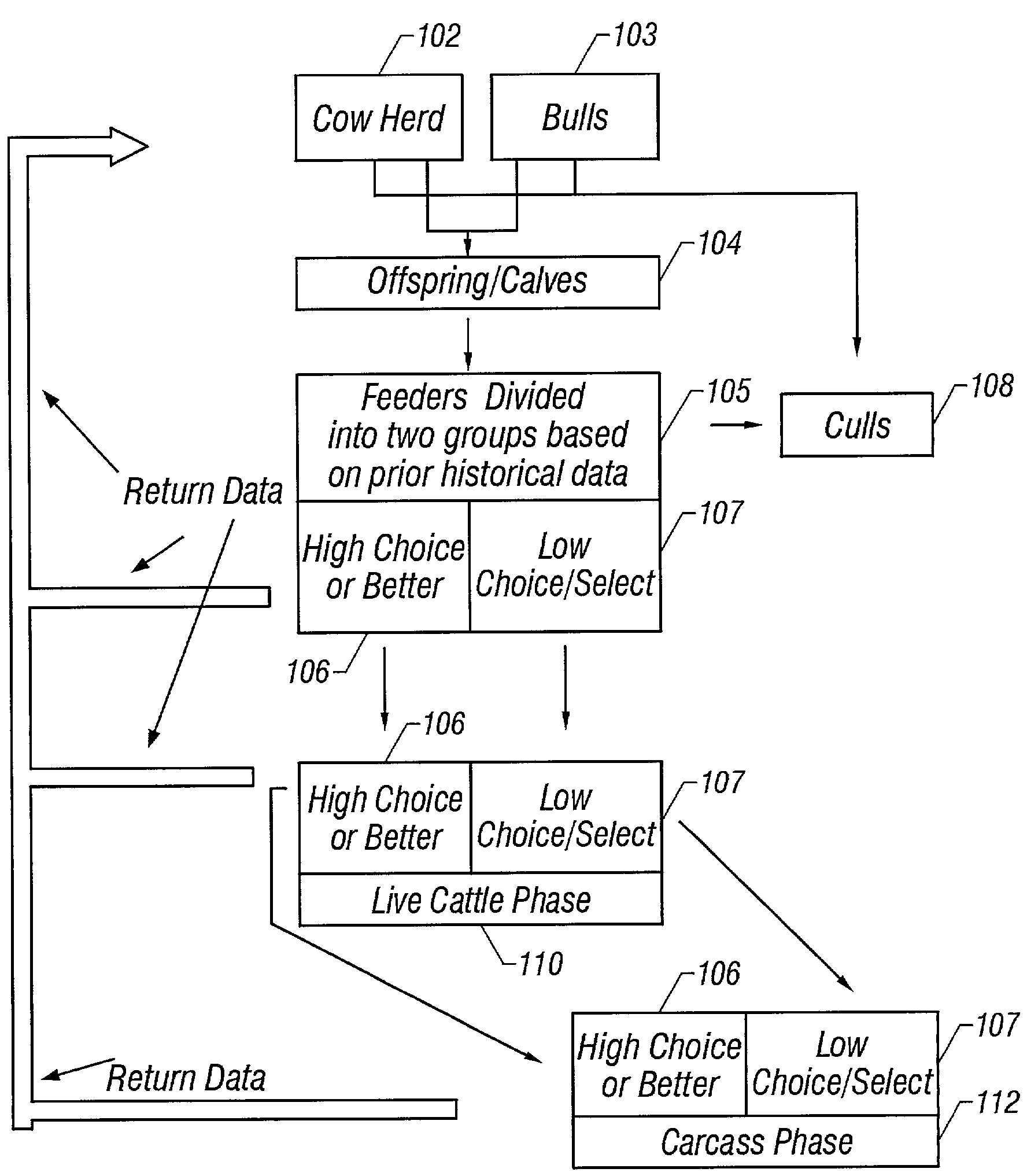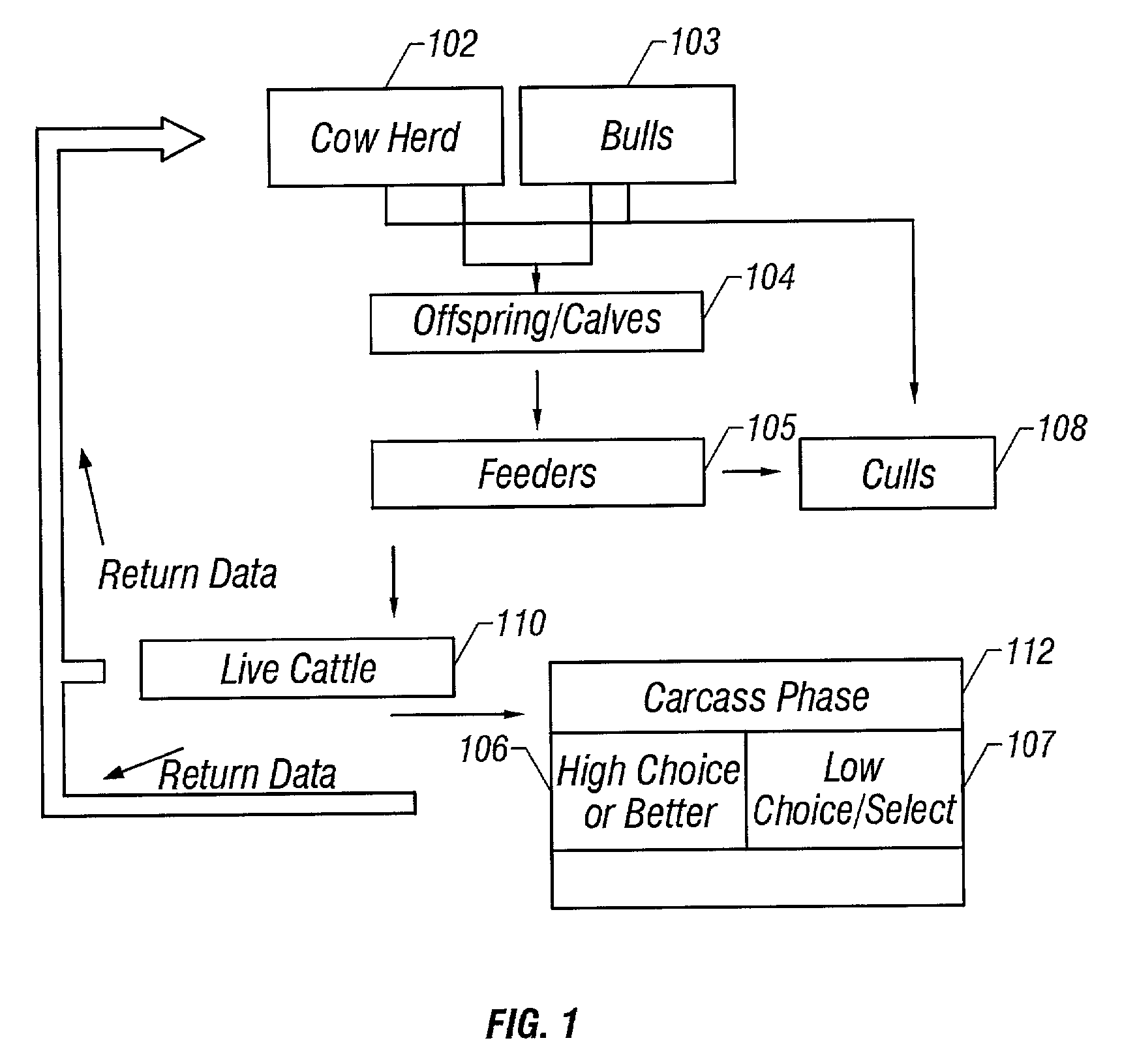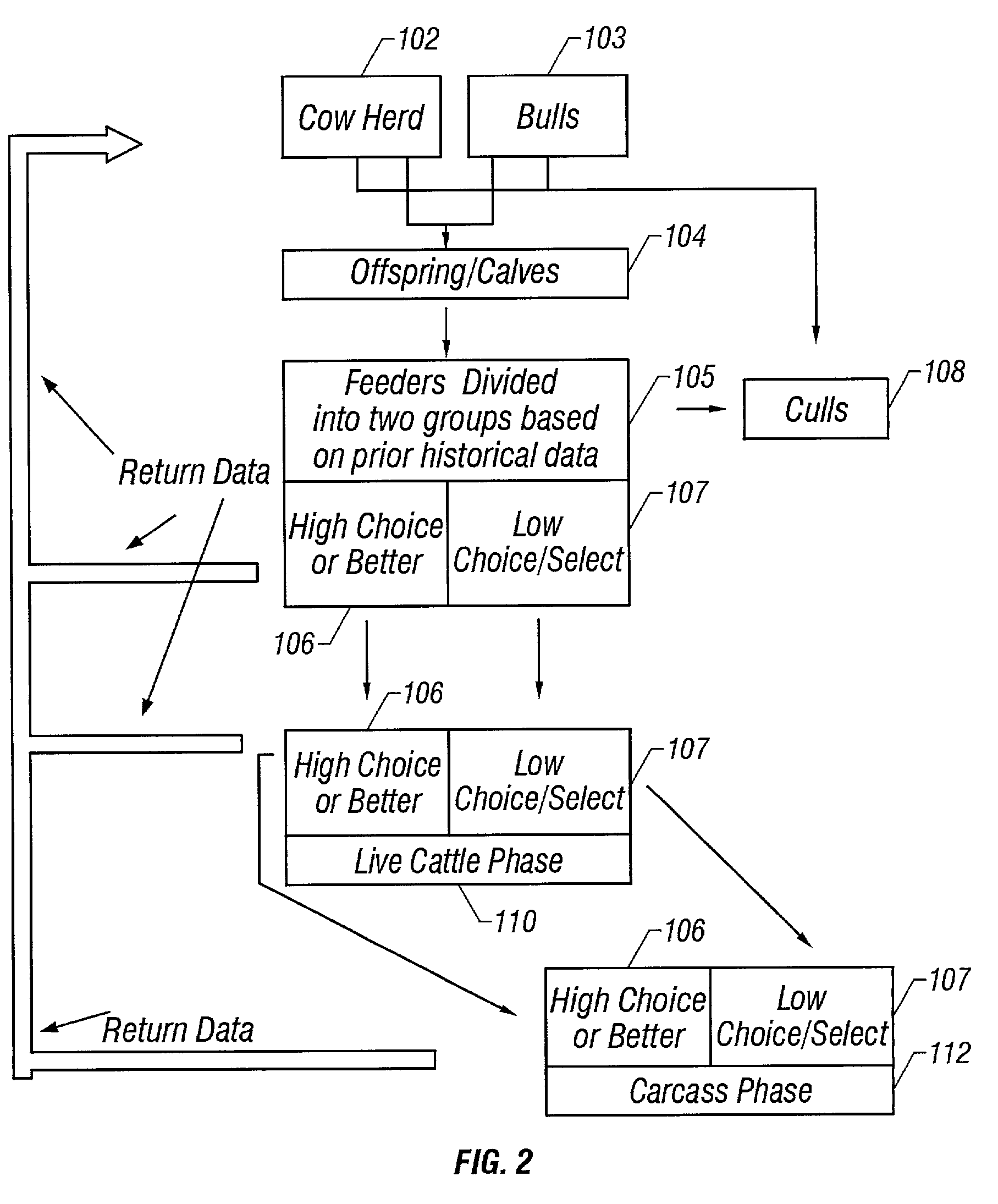Method of herd management
a herd management and cattle technology, applied in the field of cattle management, can solve the problems of increasing the cost of beef cattle, consumers do not enjoy steak dining experience, and the beef cattle industry is constantly changing at ever increasing rates, so as to improve the overall profitability of each individual member, and increase the carcass value at sale
- Summary
- Abstract
- Description
- Claims
- Application Information
AI Technical Summary
Benefits of technology
Problems solved by technology
Method used
Image
Examples
Embodiment Construction
[0024]Turing to FIG. 1, the method by which a cowherd 102 is selected and refined for improved physical and beef producing characteristics is shown. The cowherd 102 population is mated to selected bulls 103. The cows 102 and bulls 103 are selected by using actual and / or EPD data for desirable traits, which further the goal of the intended market level. Some of the important traits are fertility, birth weight, environmental suitability and efficiency. The offspring / calves 104 are then processed when the youngest calf 104 is no younger than 60 days old. Cows 102 and calves 104 are rounded up and brought in to a contained area called working pens. Cows 102 and calves 104 are separated into different holding pens. Cows 102 are then treated for external and in some areas internal parasites, checked for proper identification tags, which are replaced if, needed due to loss or unreadable numbers and overall checked for any physical problem(s) that needs attention. The cows 102 are then plac...
PUM
 Login to View More
Login to View More Abstract
Description
Claims
Application Information
 Login to View More
Login to View More - R&D
- Intellectual Property
- Life Sciences
- Materials
- Tech Scout
- Unparalleled Data Quality
- Higher Quality Content
- 60% Fewer Hallucinations
Browse by: Latest US Patents, China's latest patents, Technical Efficacy Thesaurus, Application Domain, Technology Topic, Popular Technical Reports.
© 2025 PatSnap. All rights reserved.Legal|Privacy policy|Modern Slavery Act Transparency Statement|Sitemap|About US| Contact US: help@patsnap.com



